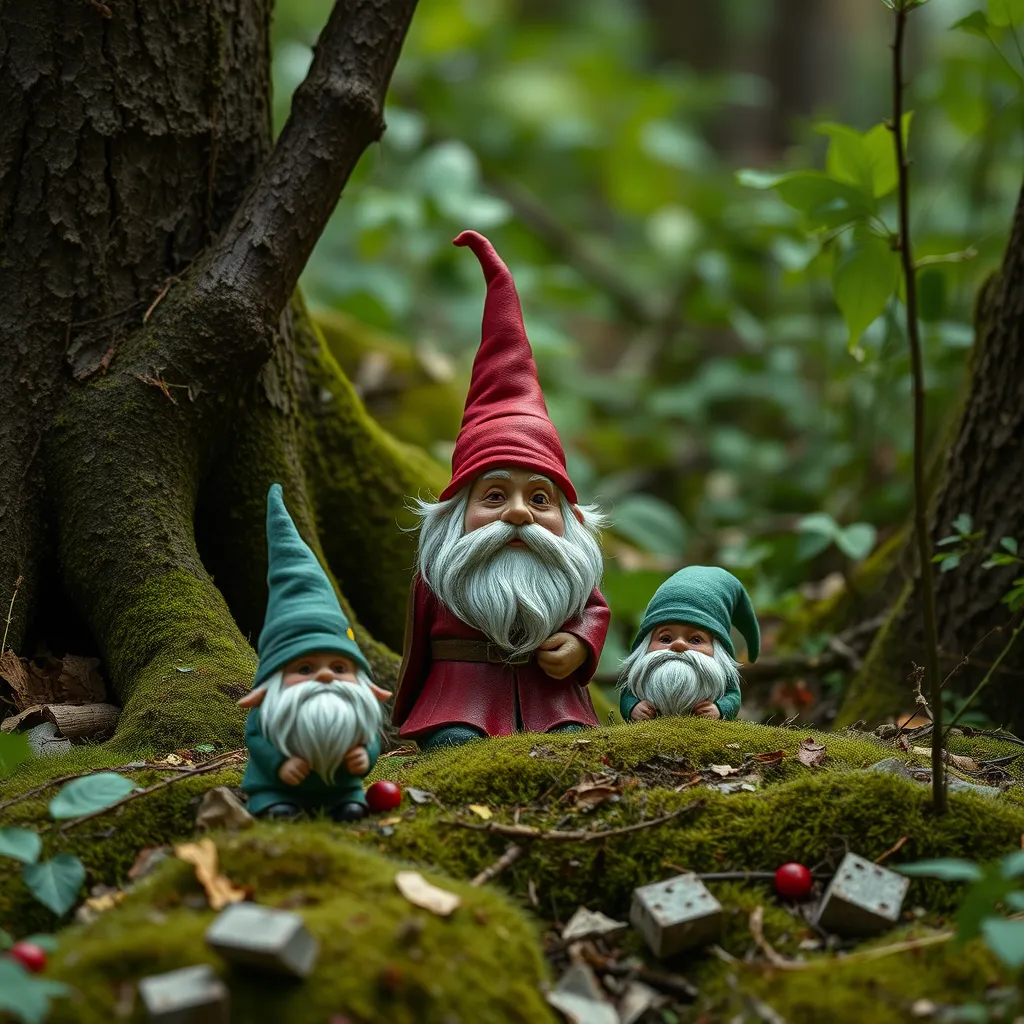Gnomes and the Environment: Exploring the Link Between Nature and the Supernatural
I. Introduction
Gnomes, with their whimsical hats and jovial expressions, have captured the imagination of many through folklore and popular culture. Traditionally depicted as small, bearded creatures, gnomes are often associated with gardens, nature, and a mystical connection to the earth. The relationship between gnomes and nature is profound, as these mythical beings symbolize a deeper understanding of our environment. This article aims to explore the environmental symbolism of gnomes, uncovering their historical significance, habitat, and role in modern sustainability efforts.
II. Historical Origins of Gnomes
The origins of gnomes are deeply rooted in European folklore and mythology. Often regarded as guardians of the earth, these creatures were believed to protect treasures hidden beneath the soil, such as minerals and gemstones. The term “gnome” itself is derived from the Greek word “gnosis,” meaning knowledge, which hints at their role as wise stewards of the natural world.
Over time, gnomes have evolved in their representation. In the early tales, they were depicted as more serious and mysterious figures, but as they entered popular culture, particularly in the 19th century, they transformed into the cheerful garden ornaments we recognize today. This evolution reflects humanity’s changing relationship with nature, as gnomes transitioned from guardians to symbols of a more playful interaction with the environment.
III. Gnomes and Their Natural Habitat
Traditionally, gnomes are said to inhabit lush gardens, dense forests, and serene meadows, places where nature thrives. Their connection to specific ecosystems highlights their role as integral parts of the natural world. Gnomes are often associated with various habitats, including:
- Woodlands: Where they are believed to safeguard trees and wildlife.
- Gardens: As protectors of plants and flowers, promoting growth and beauty.
- Streams and Rivers: Symbolizing the purity of water and aquatic ecosystems.
In these environments, gnomes are thought to foster biodiversity, helping to maintain the balance of flora and fauna. Their presence serves as a reminder of the interconnectedness of all living things.
IV. Symbolism of Gnomes in Nature Conservation
Gnomes have emerged as symbols of environmental stewardship, representing a commitment to protecting the earth. Their whimsical nature makes them approachable figures in promoting sustainability. Cultural representations of gnomes can be found in various initiatives aimed at raising awareness about ecological issues:
- Community gardens often feature gnome decorations to inspire participation in local food production.
- Environmental campaigns use gnomes to engage children and families in conservation efforts.
- Art installations incorporating gnome imagery draw attention to critical environmental causes.
Through these representations, gnomes encourage individuals to take an active role in preserving the planet for future generations.
V. The Intersection of Gnomes and Modern Environmental Movements
In contemporary literature and art, gnomes have found a place as symbols of environmental activism. Their playful nature helps to convey serious messages about sustainability and conservation. Examples include:
- Books and films featuring gnome characters that educate audiences about ecological issues.
- Eco-friendly branding that incorporates gnome imagery to promote sustainable products.
- Initiatives like Gnome for the Planet, which promote local environmental clean-up efforts.
These gnome-themed initiatives highlight the potential for mythological figures to inspire a new generation of environmental advocates.
VI. The Supernatural and Its Role in Environmental Perception
The mystical aspects of gnomes play a crucial role in shaping our understanding of nature. Folklore often imbues the natural world with magic and wonder, fostering a sense of respect and reverence for the environment. This balance between science and myth is essential for developing a comprehensive environmental ethic.
By recognizing the supernatural elements associated with gnomes, we can cultivate a deeper appreciation for nature. This perspective encourages stewardship and a sense of responsibility toward the environment, blending traditional knowledge with modern scientific understanding.
VII. Gnomes in Popular Culture and Their Environmental Messages
Gnomes have become a prominent fixture in films, books, and games, often carrying environmental messages. Analyzing these representations reveals how popular culture reflects and influences environmental attitudes:
- Animated films featuring gnomes that promote themes of friendship and the importance of nature.
- Books that utilize gnome characters to explain ecological concepts to young readers.
- Video games that incorporate gnome quests focused on restoring natural habitats.
Such portrayals not only entertain but also serve as tools for environmental education, helping to instill a sense of responsibility for protecting our planet.
VIII. Conclusion
In conclusion, the interconnectedness of gnomes and the environment is a fascinating exploration of folklore’s impact on our ecological consciousness. Gnomes serve as symbols of guardianship and stewardship, reminding us of our responsibility to protect the earth. As we embrace the gnome’s spirit in our approach to nature conservation, we can foster a deeper respect for the environment and encourage sustainable practices in our communities.
By recognizing the importance of folklore in shaping our environmental attitudes, we can inspire future generations to appreciate and protect the natural world. Let us all take a page from the gnome’s book, celebrating the beauty of nature and committing to its preservation.
https://www.youtube.com/watch?v=Gy4QHTgikbk



